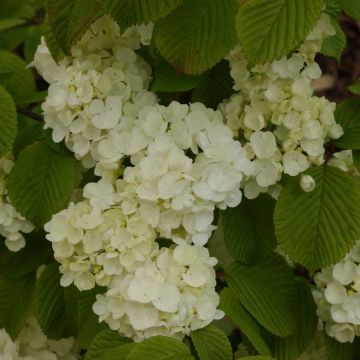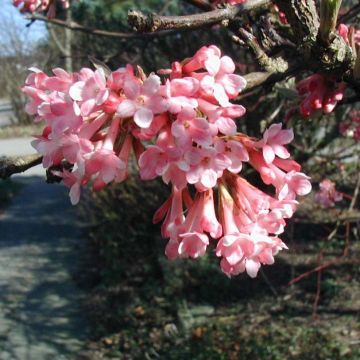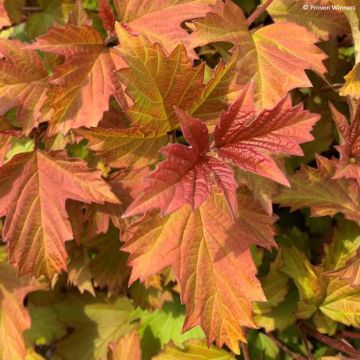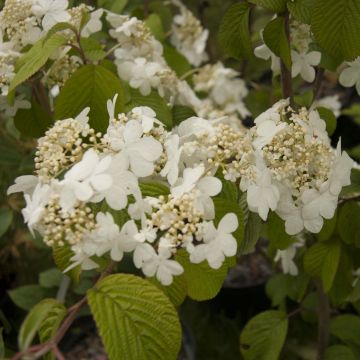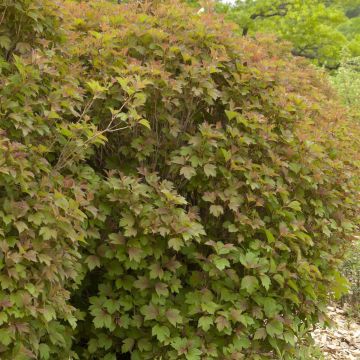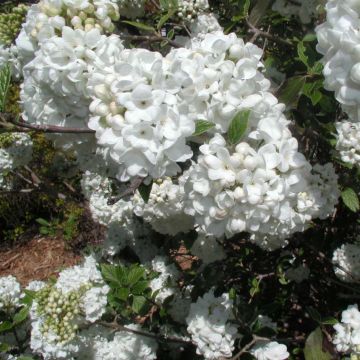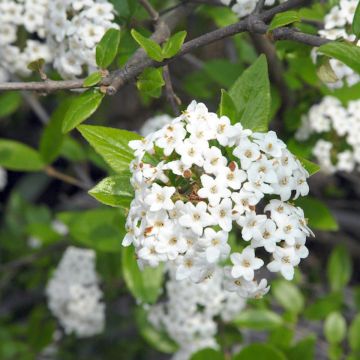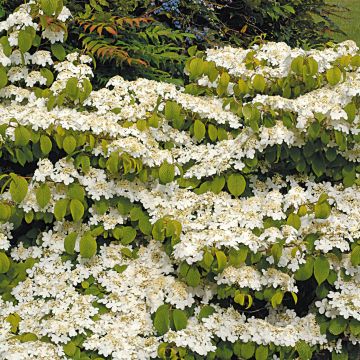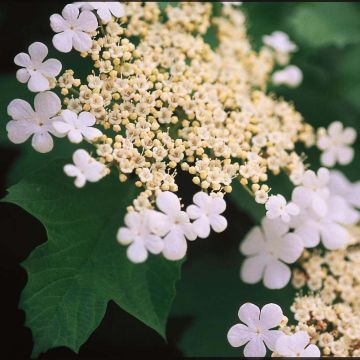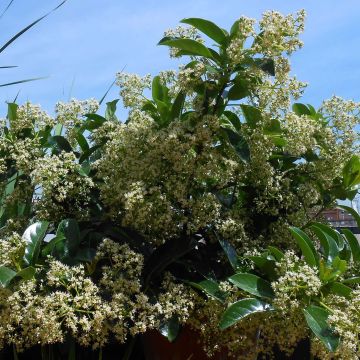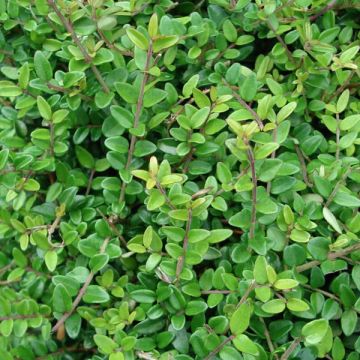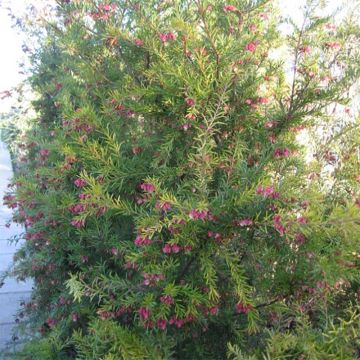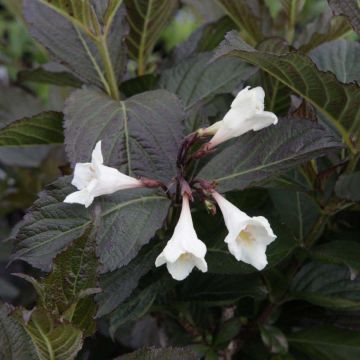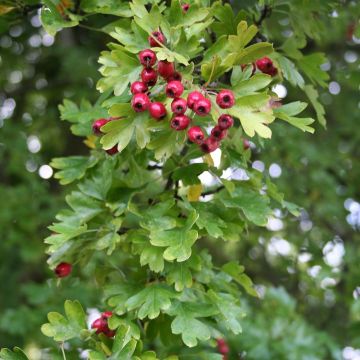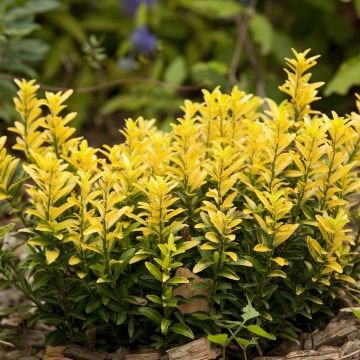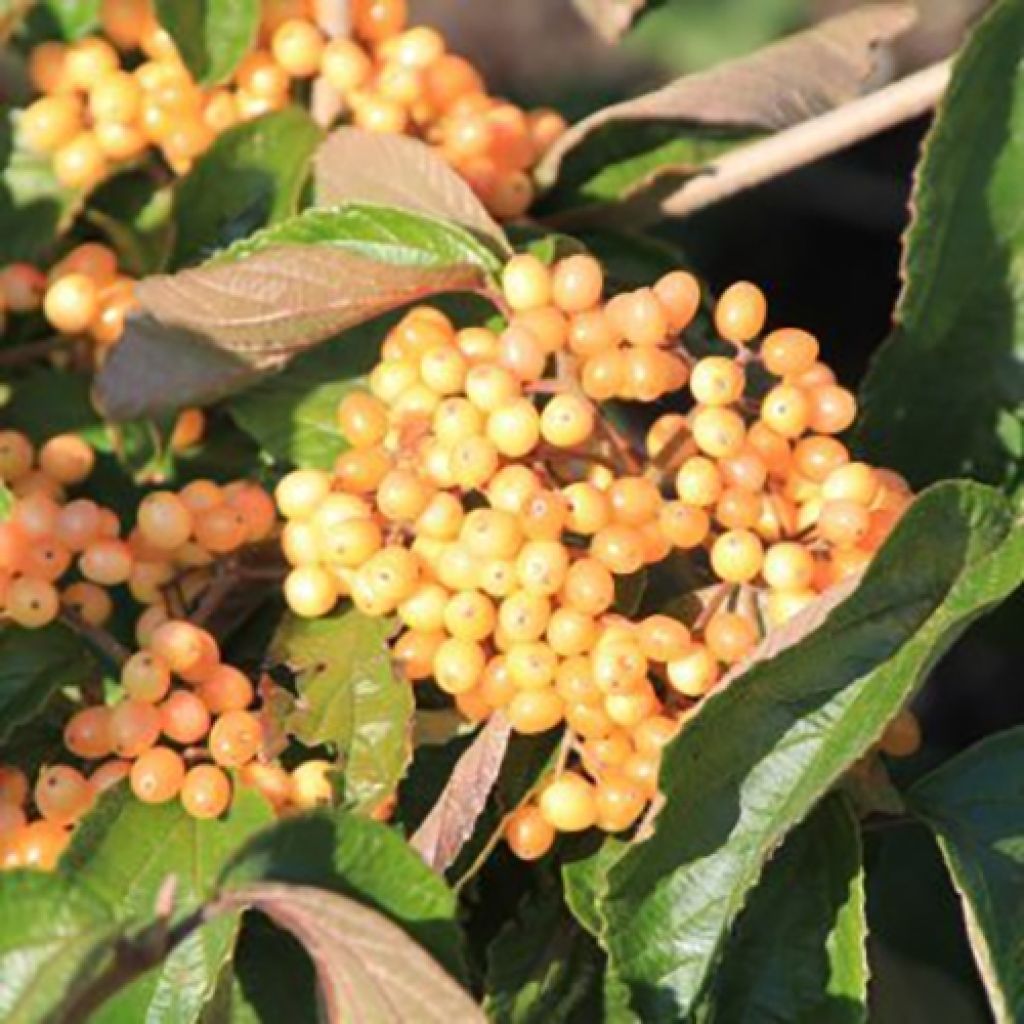

Viburnum dilatatum Michael Dodge
Viburnum dilatatum Michael Dodge
Viburnum dilatatum Michael Dodge
Linden Arrowwood, Linden Viburnum
Fine, conforming, grafted onto V. opulus.
Vincent , 27/04/2023
This item cannot be shipped to the selected country
Delivery charge from €5.90
More information
Schedule delivery date,
and select date in basket
This plant carries a 24 months recovery warranty
More information
We guarantee the quality of our plants for a full growing cycle, and will replace at our expense any plant that fails to recover under normal climatic and planting conditions.
From €5.90 for pickup delivery and €6.90 for home delivery
Express home delivery from €8.90.


Does this plant fit my garden?
Set up your Plantfit profile →
Description
Viburnum dilatatum 'Michael Dodge' is a bush with linden-like leaves, also known as the broad panicle bush. It is particularly interesting for its profusion of astonishing bright yellow berries that persist long into autumn. This deciduous bush has a rounded habit, denser and more compact than usual varieties, and produces flattened white inflorescences in spring. Its foliage turns beautiful scarlet red in autumn. A distinctive and colourful country bush that adapts to any good garden soil that is not too dry.
Viburnum dilatatum 'Michael Dodge' is a cross between V. dilatatum and V. opulus 'Xanthocarpum', selected in 1969 within the Winterthur gardens. It forms a relatively unknown bush. Viburnum dilatatum, also known as the broad panicle bush or linden-like leaf bush, belongs to the Viburnaceae family. Native to China, it deserves its place in our gardens thanks to its beautiful textured leaves and its impressive white inflorescences arranged in corymbs, followed by persistent berries that are particularly ornamental. This bush has a rounded habit with upright branches, reaching a height of 2 to 4m (7 to 13ft) and a width of 3m (10ft). Its leaves are opposite, like the leaves of a linden tree. In autumn, the foliage becomes scarlet red and persists until the leaves fall late in the season.
Completely hardy, 'Michael Dodge' is a low-maintenance plant. It thrives in sunny or semi-shady positions and flourishes in any ordinary soil, preferably moist, even limestone and clay. It can tolerate shade, but it blooms less and its autumnal colours will be more muted. It can be used as a specimen plant in small gardens. In larger gardens, use in hedges or in borders. In a hedge, it can be combined with European spindle, Cotinus, oakleaf hydrangea, and Physocarpus.
Report an error about the product description
Viburnum dilatatum Michael Dodge in pictures
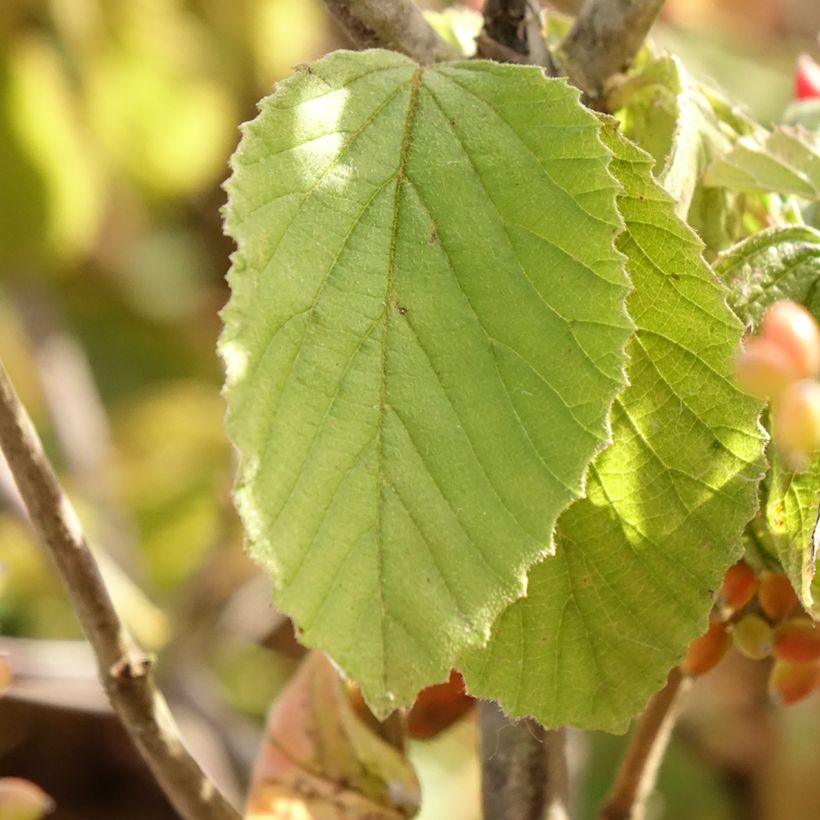

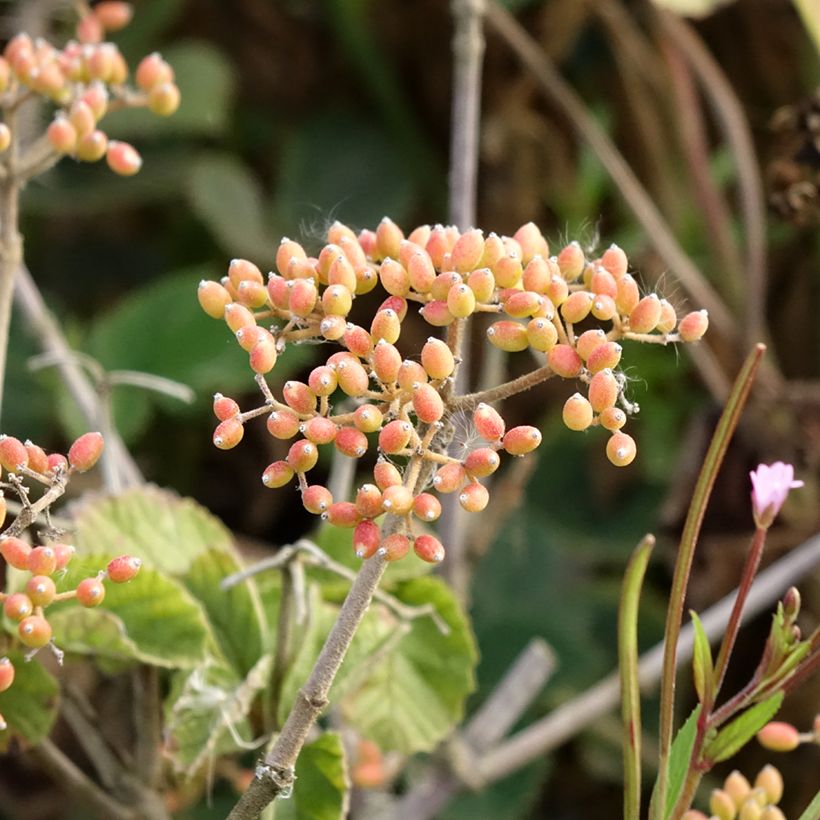

Plant habit
Flowering
Foliage
Botanical data
Viburnum
dilatatum
Michael Dodge
Caprifoliaceae
Linden Arrowwood, Linden Viburnum
Cultivar or hybrid
Other Viburnum
Planting and care
Viburnum dilatatum thrives in sunny or semi-shady locations. While it prefers moist, light soil, it can adapt to any good garden soil that is not too dry, even clayey or slightly chalky. If the soil is very chalky, you can add ericaceous soil to the planting substrate. Abundant watering after planting and during the first few weeks will ensure good establishment. Pruning can be done after flowering to maintain a compact habit.
Planting period
Intended location
Care
-
, onOrder confirmed
Reply from on Promesse de fleurs
Hedge shrubs
Haven't found what you were looking for?
Hardiness is the lowest winter temperature a plant can endure without suffering serious damage or even dying. However, hardiness is affected by location (a sheltered area, such as a patio), protection (winter cover) and soil type (hardiness is improved by well-drained soil).

Photo Sharing Terms & Conditions
In order to encourage gardeners to interact and share their experiences, Promesse de fleurs offers various media enabling content to be uploaded onto its Site - in particular via the ‘Photo sharing’ module.
The User agrees to refrain from:
- Posting any content that is illegal, prejudicial, insulting, racist, inciteful to hatred, revisionist, contrary to public decency, that infringes on privacy or on the privacy rights of third parties, in particular the publicity rights of persons and goods, intellectual property rights, or the right to privacy.
- Submitting content on behalf of a third party;
- Impersonate the identity of a third party and/or publish any personal information about a third party;
In general, the User undertakes to refrain from any unethical behaviour.
All Content (in particular text, comments, files, images, photos, videos, creative works, etc.), which may be subject to property or intellectual property rights, image or other private rights, shall remain the property of the User, subject to the limited rights granted by the terms of the licence granted by Promesse de fleurs as stated below. Users are at liberty to publish or not to publish such Content on the Site, notably via the ‘Photo Sharing’ facility, and accept that this Content shall be made public and freely accessible, notably on the Internet.
Users further acknowledge, undertake to have ,and guarantee that they hold all necessary rights and permissions to publish such material on the Site, in particular with regard to the legislation in force pertaining to any privacy, property, intellectual property, image, or contractual rights, or rights of any other nature. By publishing such Content on the Site, Users acknowledge accepting full liability as publishers of the Content within the meaning of the law, and grant Promesse de fleurs, free of charge, an inclusive, worldwide licence for the said Content for the entire duration of its publication, including all reproduction, representation, up/downloading, displaying, performing, transmission, and storage rights.
Users also grant permission for their name to be linked to the Content and accept that this link may not always be made available.
By engaging in posting material, Users consent to their Content becoming automatically accessible on the Internet, in particular on other sites and/or blogs and/or web pages of the Promesse de fleurs site, including in particular social pages and the Promesse de fleurs catalogue.
Users may secure the removal of entrusted content free of charge by issuing a simple request via our contact form.
The flowering period indicated on our website applies to countries and regions located in USDA zone 8 (France, the United Kingdom, Ireland, the Netherlands, etc.)
It will vary according to where you live:
- In zones 9 to 10 (Italy, Spain, Greece, etc.), flowering will occur about 2 to 4 weeks earlier.
- In zones 6 to 7 (Germany, Poland, Slovenia, and lower mountainous regions), flowering will be delayed by 2 to 3 weeks.
- In zone 5 (Central Europe, Scandinavia), blooming will be delayed by 3 to 5 weeks.
In temperate climates, pruning of spring-flowering shrubs (forsythia, spireas, etc.) should be done just after flowering.
Pruning of summer-flowering shrubs (Indian Lilac, Perovskia, etc.) can be done in winter or spring.
In cold regions as well as with frost-sensitive plants, avoid pruning too early when severe frosts may still occur.
The planting period indicated on our website applies to countries and regions located in USDA zone 8 (France, United Kingdom, Ireland, Netherlands).
It will vary according to where you live:
- In Mediterranean zones (Marseille, Madrid, Milan, etc.), autumn and winter are the best planting periods.
- In continental zones (Strasbourg, Munich, Vienna, etc.), delay planting by 2 to 3 weeks in spring and bring it forward by 2 to 4 weeks in autumn.
- In mountainous regions (the Alps, Pyrenees, Carpathians, etc.), it is best to plant in late spring (May-June) or late summer (August-September).
The harvesting period indicated on our website applies to countries and regions in USDA zone 8 (France, England, Ireland, the Netherlands).
In colder areas (Scandinavia, Poland, Austria...) fruit and vegetable harvests are likely to be delayed by 3-4 weeks.
In warmer areas (Italy, Spain, Greece, etc.), harvesting will probably take place earlier, depending on weather conditions.
The sowing periods indicated on our website apply to countries and regions within USDA Zone 8 (France, UK, Ireland, Netherlands).
In colder areas (Scandinavia, Poland, Austria...), delay any outdoor sowing by 3-4 weeks, or sow under glass.
In warmer climes (Italy, Spain, Greece, etc.), bring outdoor sowing forward by a few weeks.

































